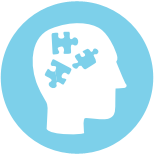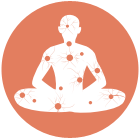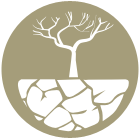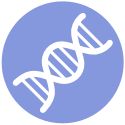Difference between revisions of "New design"
| Line 146: | Line 146: | ||
<div class="col-lg-4 box"> | <div class="col-lg-4 box"> | ||
<center> | <center> | ||
| − | <a href=" | + | <a href=""><img src="http://carakasamhitaonline.com/mediawiki-1.32.1/images/img/rise.png" /></a> |
</center> | </center> | ||
<p align="center" class="titlename">Rise in chronic/<br />autoimmune diseases</p> | <p align="center" class="titlename">Rise in chronic/<br />autoimmune diseases</p> | ||
| Line 239: | Line 239: | ||
<div class="col-sm"> | <div class="col-sm"> | ||
<center> | <center> | ||
| − | <a href=" | + | <a href=""><img src="http://carakasamhitaonline.com/mediawiki-1.32.1/images/img/dosha.png" /></a> |
</center> | </center> | ||
<p align="center" class="titlename">Tri-DOSHA</p> | <p align="center" class="titlename">Tri-DOSHA</p> | ||
| Line 246: | Line 246: | ||
<div class="col-sm"> | <div class="col-sm"> | ||
<center> | <center> | ||
| − | <a href=" | + | <a href=""><img src="http://carakasamhitaonline.com/mediawiki-1.32.1/images/img/agni.png" /></a> |
</center> | </center> | ||
<p align="center" class="titlename">AGNI</p> | <p align="center" class="titlename">AGNI</p> | ||
| Line 253: | Line 253: | ||
<div class="col-sm"> | <div class="col-sm"> | ||
<center> | <center> | ||
| − | <a href=" | + | <a href=""><img src="http://carakasamhitaonline.com/mediawiki-1.32.1/images/img/indriyan.png" /></a> |
</center> | </center> | ||
<p align="center" class="titlename">INDRIYAN</p> | <p align="center" class="titlename">INDRIYAN</p> | ||
| Line 260: | Line 260: | ||
<div class="col-sm"> | <div class="col-sm"> | ||
<center> | <center> | ||
| − | <a href=" | + | <a href=""><img src="http://carakasamhitaonline.com/mediawiki-1.32.1/images/img/mala.png" /></a> |
</center> | </center> | ||
<p align="center" class="titlename">MALA</p> | <p align="center" class="titlename">MALA</p> | ||
| Line 267: | Line 267: | ||
<div class="col-sm"> | <div class="col-sm"> | ||
<center> | <center> | ||
| − | <a href=" | + | <a href=""><img src="http://carakasamhitaonline.com/mediawiki-1.32.1/images/img/dhatu.png" /></a> |
</center> | </center> | ||
<p align="center" class="titlename">DHATU</p> | <p align="center" class="titlename">DHATU</p> | ||
Revision as of 06:05, 17 July 2019

"YATHA PINDE TATHA BRAMHANDE"
Means the state of a human body corresponds to - or mirrors the state of the universe.
In other words, a human being is a microcosm of the universe or the planet.
The health of the humans, society and planet is deteriorating.
If human health improves, other two challenges will also get taken care off.
In order to improve the health of the people it is important to clearly understand what health is?
CURRENT DEFINITIONS OF HEALTH
WHO
Health is a state of complete physical, mental and social wellbeing
and not merely the absence of disease or infirmity
CONFERENCE OF INTERNATIONAL HEALTH (2009)
Health is not a "state" but is an "Ability to adapt and self-manage in the face of social, physical and emotional challenges".
TRADITIONAL CHINESE MEDICINE (TCM)
Concept of balanced qi (pronounced chee), or vital energy, that is
believed to flow throughout the body
First two definitions are broad and do not guide with specific actions to achieve healthy status.
TCM narrows down to achieving equilibrium but still falls short of being specific.
"Sum dosha, sum agnishch, sum dhatu, mal kriyah".
Prasannatmendiriya manah swastha ibhidiyate.
CAUSES OF DISEASE

PRAGYAPARADHA
(Mistake of the intellect)

KALA
(Season, time, place etc.)

Asaatmyendriyartha
(Misuse or abuse of the five senses)

Bacteria, viruses, trauma etc.
Modern medicine's offense (treatment of disease) and Ayurveda's defense (restoration of health and disease management) combined would provide for an actionable roadmap
(Offense Strategy)
Diagnosis
Etiology
Pathology/Pathogenesis
Treatment
(Defence Strategy)
Tridoshic equilibrium
Equilibrium of Agni
Dhatus in balanced state
Proper excretion of waste products
State of mind, indriyas(five senses) and Soul








